Jasmine Birtles
Your money-making expert. Financial journalist, TV and radio personality.

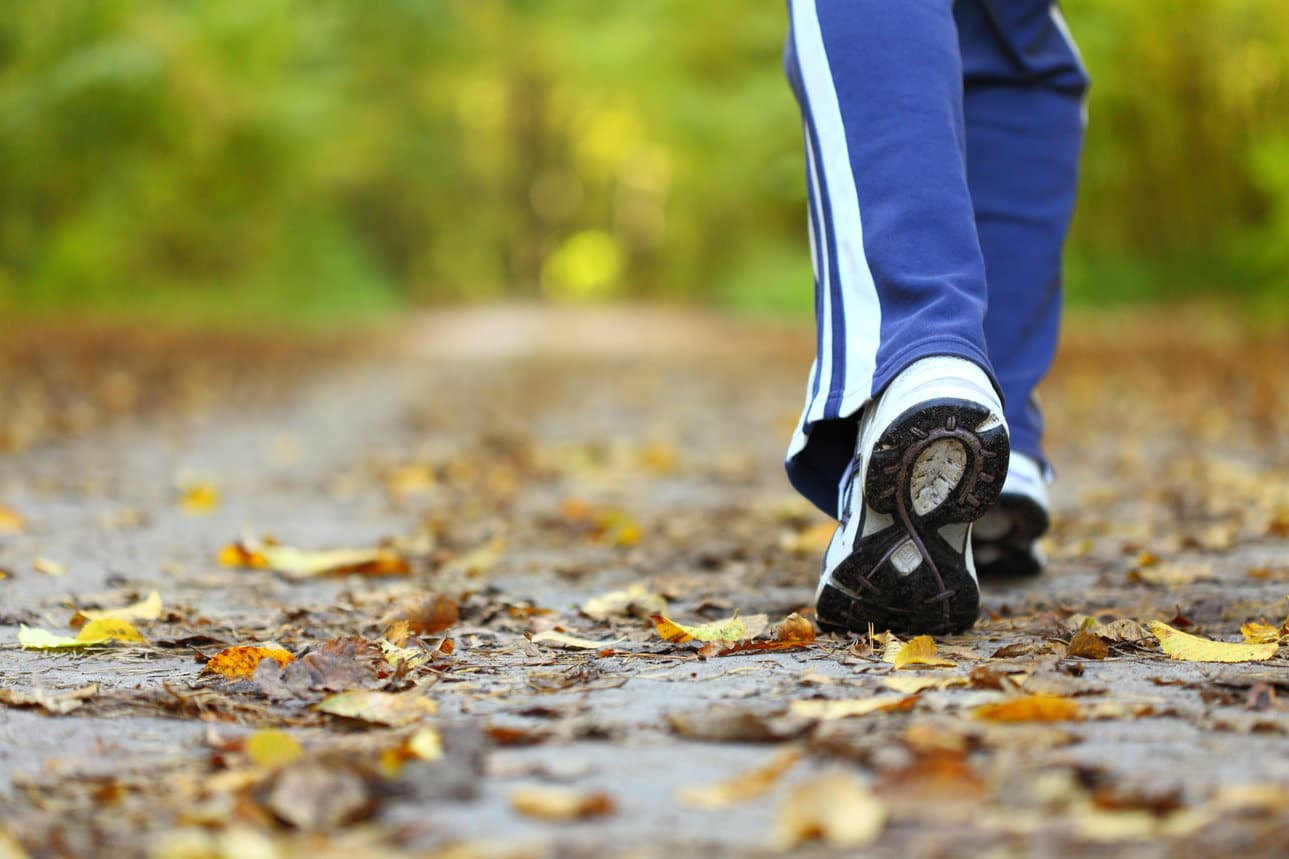
Walking is an often-underrated exercise that many of us have recently discovered in lockdown. Tired of being cooped up inside, we’re all taking more walks around the block than before.
But it’s also a fantastic way to get fit, be sociable (in a responsible, distanced manner), and enjoy the Great Outdoors. Now we’re able to travel more widely to walk in beautiful locations, try these handy tips to get the most out of walking for fitness. It’s easy to start walking for free – but if you enjoy it a lot, we’ve added plenty of tips about kit, routes, and hiking safety, too.
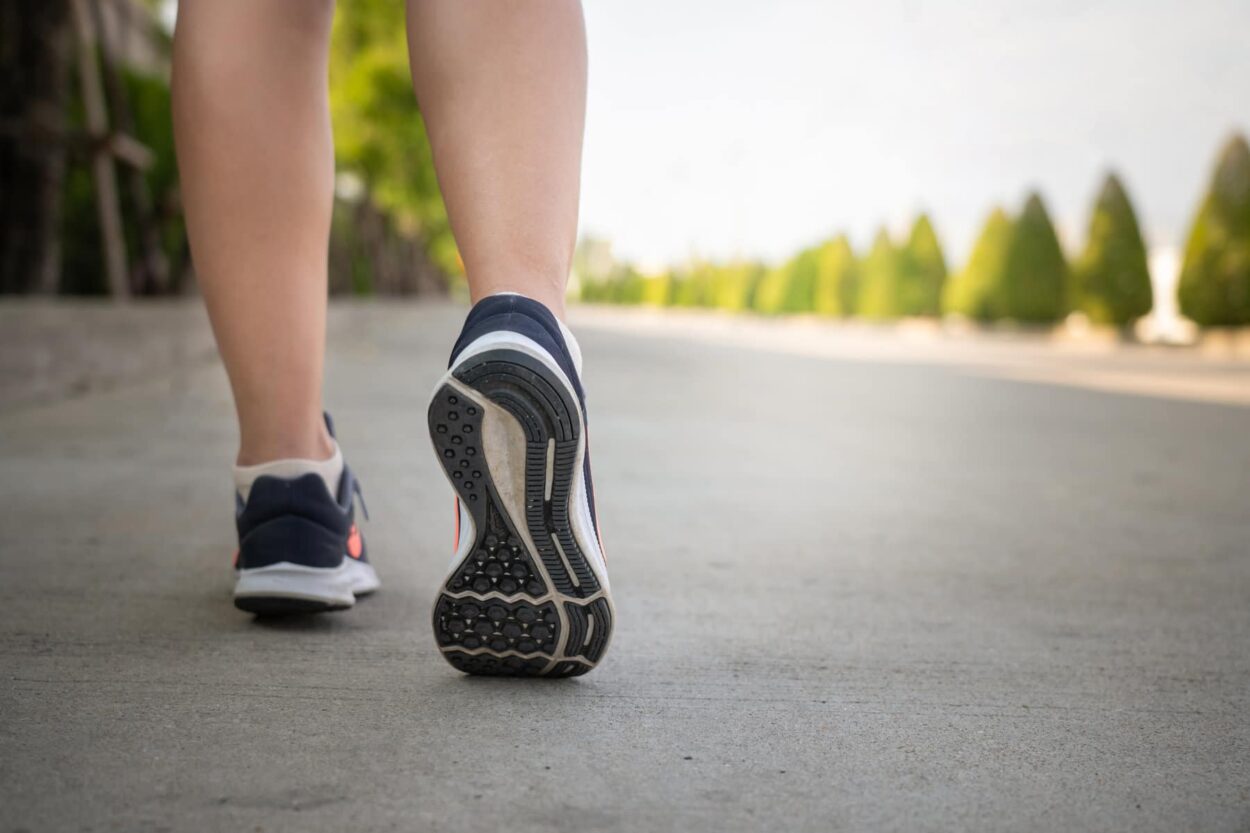
We’re allowed to drive to get to a location for exercise now. However, it’s a good idea to start locally first. Find nearby beauty spots and parks to get started and find your comfort zone with walking.
When you’re planning longer hikes, remember we’re still responsible for our actions. Try to plan walks in less crowded areas, or opt to walk much earlier in the day to avoid the crowds. Many coastal routes and hiking trails have very narrow paths that could make social distancing difficult.
Remember, too, that cafes, public toilets, and parking facilities are still closed. You’ll need to plan for this by doing things like packing plenty of food and water as a picnic.
The great thing about walking is that you can do it at any age, with any level of fitness. It’s ideal even for those with limited mobility problems – shorter walks for people who have arthritis or back problems are a great way to build up to longer hikes. Even at a slow pace, you’ll burn at least 148 calories an hour.
You can take your children on walks to teach them about nature, too. It’s a great way to burn off excess energy together and have fun at the same time!
You’ll also find your mental health benefits from spending time in the great outdoors. Even your local park is full of wildlife if you take a look! Unlike running and jogging, which focuses on the physical cardiovascular exercise, walking allows you time to enjoy your surroundings while you get fit.
More than that, as long as you abide by social distancing rules, you can boost your mental wellbeing by meeting a friend for your next walk. You’ll get fit together AND catch up on the latest gossip!
Walking is fantastic for your wallet as well as your health. You don’t have to spend anything on it – but if you’re serious about walking your way to the peak of health, you might want to invest in a bit of kit.
It’s ALMOST as simple as putting one foot in front of the other! Posture and stride is the most important thing when you start walking.
Keep your spine neutral, shoulders relaxed, and strike the floor with your heel first. Use your arms to swing and create momentum – power walkers keep their arms at a 90-degree angle, if you want to get some serious speed up.
You can leave your home right now and take a stretch around your surroundings – take note of your walking gait and posture. Paying attention to it will help you avoid bad habits that could lead to shoulder, back, or joint strain.
It’s the most natural movement we make, and it’s free to do – but walking gets more enjoyable when you do more than a stroll around the park! If you find you’re enjoying your local walks around your area, consider taking longer walks and investing in a little bit of kit to get the most out of your exercise.
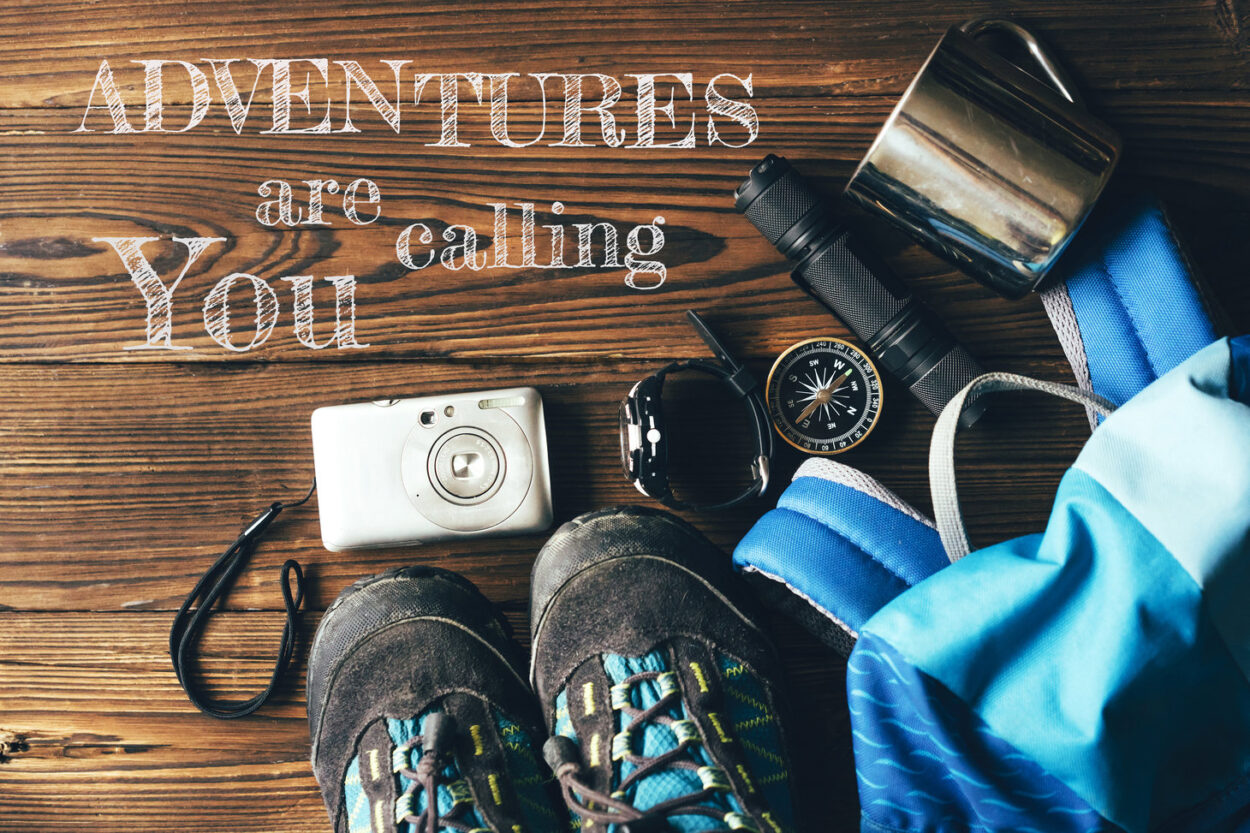
A decent pair of trainers is a great investment for anyone wanting to walk regularly. When you’re paying attention to your walking gait, consider the movement of your feet. Do they tend to roll inwards (overpronation) or outwards (supination)? This will tell you which type of trainer suits you best.
People with a tendency to roll their foot inwards towards the arch may need extra arch support. Those with a supination issue may need orthortic inserts like heel seats to help them spread their weight across the whole of the foot instead of just the outside of the foot.
You don’t need to spend a lot on your trainers – especially when you’re starting out. Look for breathable fabrics and plenty of cushioning in the sole. Ankle support is also particularly helpful when you’re starting to walk for fitness. When you start taking on hikes across hilly terrain, it’s worth investing in decent waterproof hiking boots, too. They offer additional ankle support for rough terrain and protection against rocky ground.
Other kit you might want to buy includes:
When the sun’s out, it’s tempting to think “Great, let’s go on a hike!”. But if you’re not ready for it, you could end up injuring yourself. Or, you might get so sore afterwards you won’t ever want to do it again!
Start with short distances near to your home. Your local park, green spaces, or fields if you’re in the countryside are all great places to start.
You can build up from here in two ways: add extra time or increase your speed. Try both goals to improve your fitness AND prepare yourself for longer hikes. Add an extra half-mile each week to your route – and once a week, challenge yourself to shave some time off your usual route.
Plan varied walking routes, too. Even around your local town or city centre, you’ll find lots of different things on your walks you’ve never spotted before! Switching the route up will keep it interesting and help you adapt to longer walking routes, too.
If you’re able to, get some hill walking in your routine as well. Hills are fantastic for building core and leg strength, and help you burn more calories than flat routes. It’s also good practice for longer countryside hikes!
Always remember to carry out some basic walking stretches before your walk and when you get home. This helps prevent injury and stop you getting too sore!
If you’re finding that you’re very sore the next day (or two days later), try a bath with Epsom Salts to relieve the muscle strain. It’s also a sign you need to cut back on your walking distance and/or speed a bit, and slowly rebuild to the pace you’ve just completed.
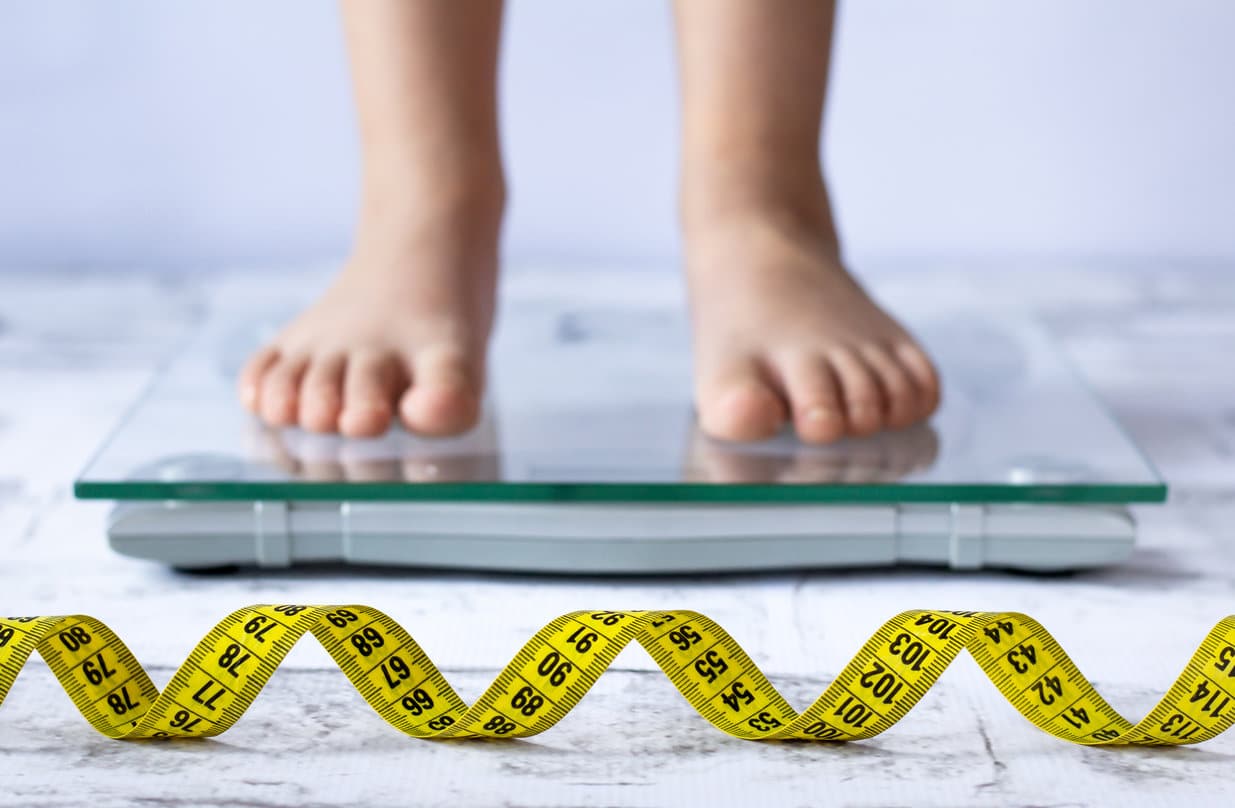
If you want to use walking for weight loss, there are some extra things you can do.
Some people find writing a walking journal helps them stay motivated, too. You can use a notebook, or combine it with an app like MyFitnessPal to track your calories, exercise, and nutrition. The app also integrates with Map My Run, which automatically tracks your walking route and gives you lots of statistics like calories burned and time taken.
When you’re ready to take on a more challenging walk, it’s time to consider investing in a small-but-essential kit. All of these items can be picked up fairly cheaply – the biggest expense is probably the day bag itself!
Try shopping online and use cashback websites to make the most of potential deals. Scout around for discount codes and vouchers, plus online sales, to slash the cost of your hiking kit even further.
It looks like a lot, but you can buy small travel versions of these things to save on space! The packable waterproof layers are essential even if you think the weather is going to be beautiful all day. Walking hills and valleys means you’ll often come across micro-climates, unexpected fog, and cooler temperatures than expected!
You don’t HAVE to get these things – but if you become a regular long-distance walker, it’s worth adding them to your kit over time.
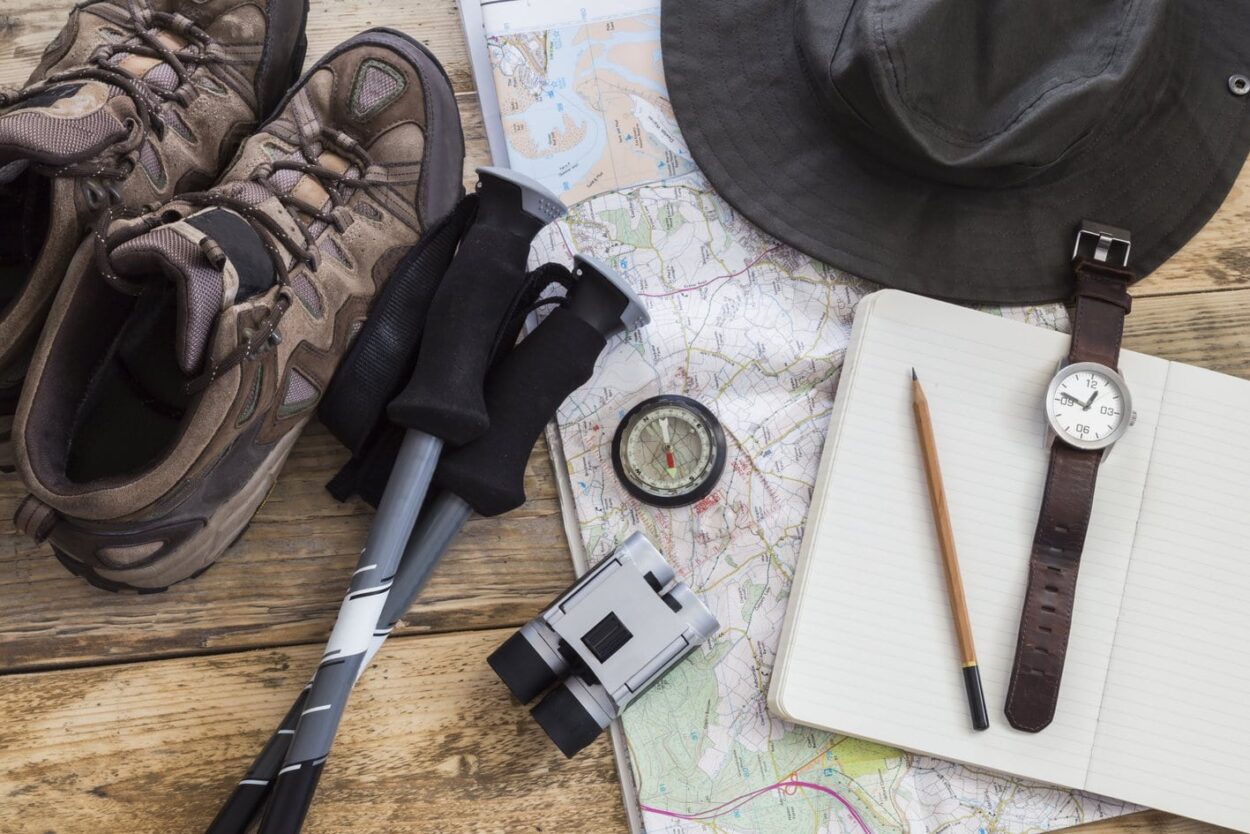
Walking or trekking poles can add stability to your stride. Some people also say they can help you burn more calories (as you need a larger arm-swing to use them), so it’s worth considering if you’re walking for weight loss.
Poles are inexpensive – at time of writing, you could buy a pair of walking poles from places like Mountain Warehouse or Sports Direct for around £20. The more expensive poles are lighter in weight, fold into smaller sections, or have additional shock absorption at the base.
However, try the less expensive ones first to see if you get on with them. You could even try looking for second-hand poles on local Facebook groups or the NextDoor app for an even cheaper pair!
Many frequent hikers invest in a multi-tool. A knife is the very least you’ll need on longer day hikes and overnight light camping trips. You’ll be surprised just how handy a multi-tool can be!
Again, they’re not expensive – but the more you pay, the better quality you’ll get.
Keen orienteering experts and frequent hikers all know the wonders of a map pack. It’s a simple – but effective – way to keep your map dry and always accessible. You can get one from as little as £5.99 and it’ll save you from soggy maps!
Walking in the wilderness is great – but it’s important to always have your phone charged in case you get lost or have an accident. A solar-powered charger is an effective and inexpensive way to make sure you’ve always got power for your phone, wherever you are. Hang it on the outside of your backpack so that it charges while you walk.
Anyone taking on an epic day hike away from common routes, or planning to camp on a longer trail, needs to pack an extra emergency kit. Again, these things don’t cost much and won’t take up a lot in your backpack – but could save your life.
Consider getting:
All of this kit together sounds expensive and a lot to carry – but it’s really not! You don’t need to buy it until you’re sure you want to regularly take longer hikes. Even then, it’ll all fit in a standard 25L backpack with ease!
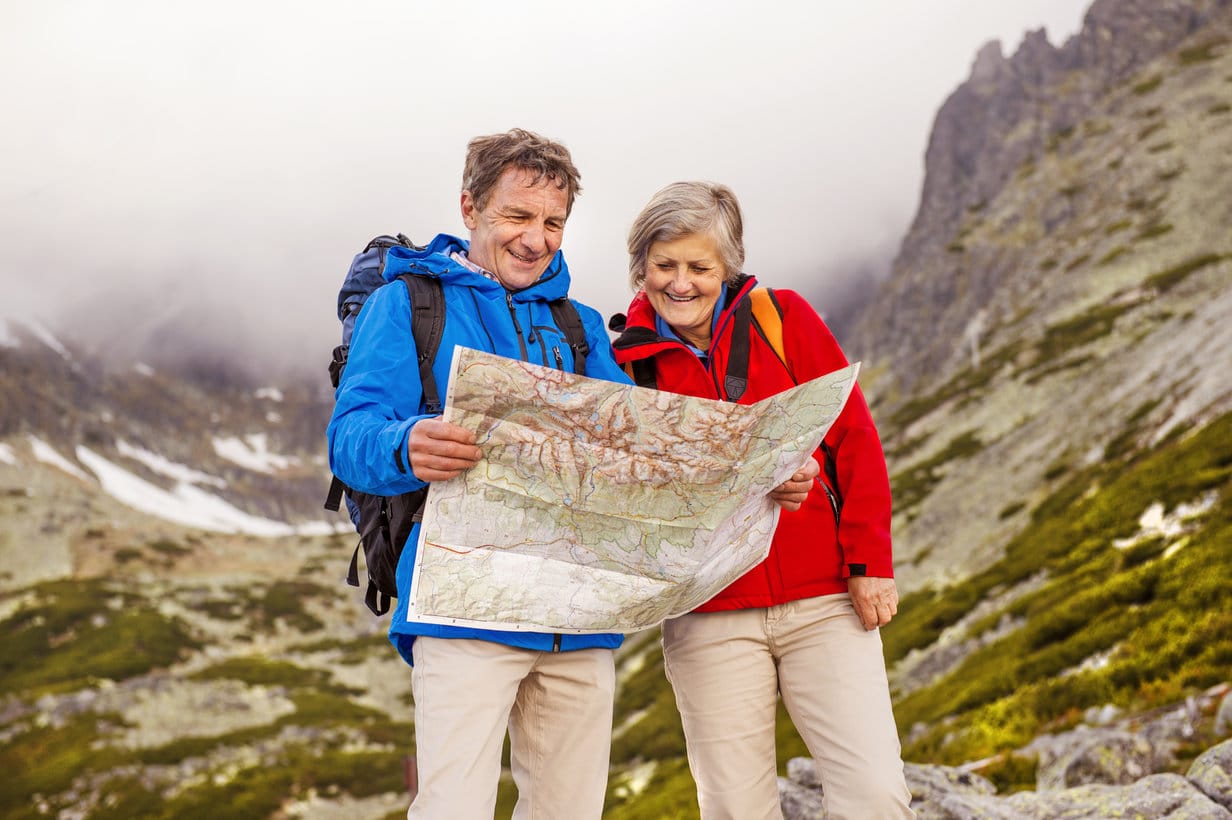
If you’re feeling inspired to take up walking for fitness, make sure you know where you’re going!
The Walking Britain website has tons of useful resources for new and experienced walkers. Choose local or regional maps, or pick a route that suits your experience level. There’s a lot of advice for new walkers to follow, too.
If you know roughly where you want to walk, plot your map on the official Ordnance Survey website. You can print the map off – or download it to your phone so it’s always handy. You do have to sign up and pay for the service – but take advantage of the free trial first to see if it’s right for you!
Another handy website for finding hidden trails is FootPathMap.co.uk. Gather information on UK Right of Way routes to make sure you don’t accidentally stray into private land!
Even if you’re only taking a local jaunt around your parks and backroads, make sure you tell someone where you’re going and when you expect to be home.
Music is a great motivator – but headphones can obstruct your surroundings. If you’re walking in an urban area, keep at least one ear open so you can listen for traffic or other potential dangers.
Download What3Words. It’s a safety app that’s assigned 3 random words to every 3m-squared area IN THE WORLD. If you get stuck – for example, if you have a fall and can’t walk – the app has an emergency feature. Alert mountain rescue or other rescuers to your almost-exact location so they can get to you much faster!
Walking is a fun and free way to get fit – especially in today’s restricted life. There are lots of other ways you can get fit for free, though – and even make money from working out! Try these articles for more inspiration.

Excellent article. Particularly agree with the ‘borrow a dog’ part. There are lots of dogs stuck inside that would enjoy a stroll with a responsible walker.